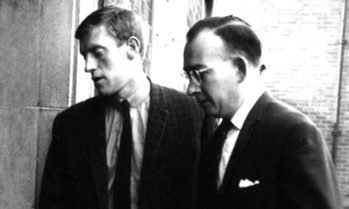
Ten professional footballers were found guilty of match fixing at Nottingham Assizes, fifty years ago.
The case had rocked the game and all received prison sentences ranging from four months to four years.
Amongst the 10 were three high-profile Sheffield Wednesday players Tony Kay, Peter Swan and David “Bronco” Layne.
The game they were involved in rigging had taken place over two years earlier in December, 1962, when Wednesday lost 2-0 at Ipswich Town.
The fix was part of a scheme devised by Jimmy Gauld, a one-time Scottish youth international who’d retired from the game after breaking his leg.
Gauld had been at clubs like Swindon where he’d played alongside Layne Plymouth and Mansfield.
He arranged through his contacts in dressing rooms to pre-determine the results of three separate games.
In addition to Wednesday’s defeat, Gauld planned for Lincoln City to lose at home to Brentford and York to lose at Oldham.
All three results “came in” and Gauld and his syndicate won on the fixed odds coupon.
It wasn’t massive money. In the case of Swan, Kay and Layne, £150 each. At the time, that would have amounted to around three weeks’ wages.
Gauld tried it again in 1963, this time recruiting three Bristol Rovers players to fix a game against Bradford Park Avenue.
However, a Sunday newspaper exposed the scandal.
Gauld received a four-year sentence in January, 1965, and though the Wednesday trio ended with the lightest prison terms four months each it was the involvement of such household names that shocked so deeply.
Kay was a midfielder who by the time of the trial had been transferred to Everton for a then British record of £60,000.
He was also an England international and expected to be in the World Cup squad. He never returned to professional football.
Swan had won 19 England caps and most observers expected him to partner Bobby Moore in the centre of England’s defence in 1966 a spot that eventually went to Jack Charlton.
He worked as a car salesman and pub landlord but when his ban from the game was lifted in 1972, returned to Wednesday at the age of 36 and played 15 more times before moving to Bury.
Layne also returned to Hillsborough but never made a first-team appearance and played just four matches on loan at Hereford before signing for non-league Matlock Town.

Enjoy the convenience of having The Sunday Post delivered as a digital ePaper straight to your smartphone, tablet or computer.
Subscribe for only £5.49 a month and enjoy all the benefits of the printed paper as a digital replica.
Subscribe